because a highly structured plan facilitates the long-term flexibility of a hospital & optimises its visitor, medical, & logistical flows
because a highly structured plan facilitates the long-term flexibility of a hospital & optimises its visitor, medical, & logistical flows
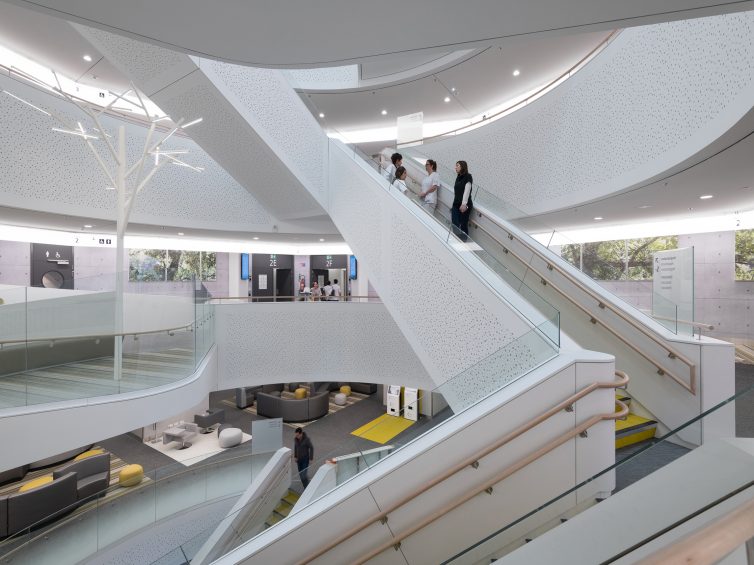
The programme involved bringing together all the acute and inpatient activities of the current sites (Cavell & Léopold) within a single building.
The major organisational challenges of the project concerned the general functionality of the building, the user-friendliness of the spaces, improvement of the reception, and comfort of the patients and the working conditions of the doctors and staff, flexibility and scalability, the implementation of appropriate technologies, etc. Architecturally, this programme translates into care units of standardised size, mostly individual rooms, a modular technical platform – enabling spaces and circuits to be optimised, restrained and comfortable reception and waiting areas, efficient information and communication systems, and – a fundamental element – great simplicity and legibility of access and flows (patients, visitors, carers, etc.).
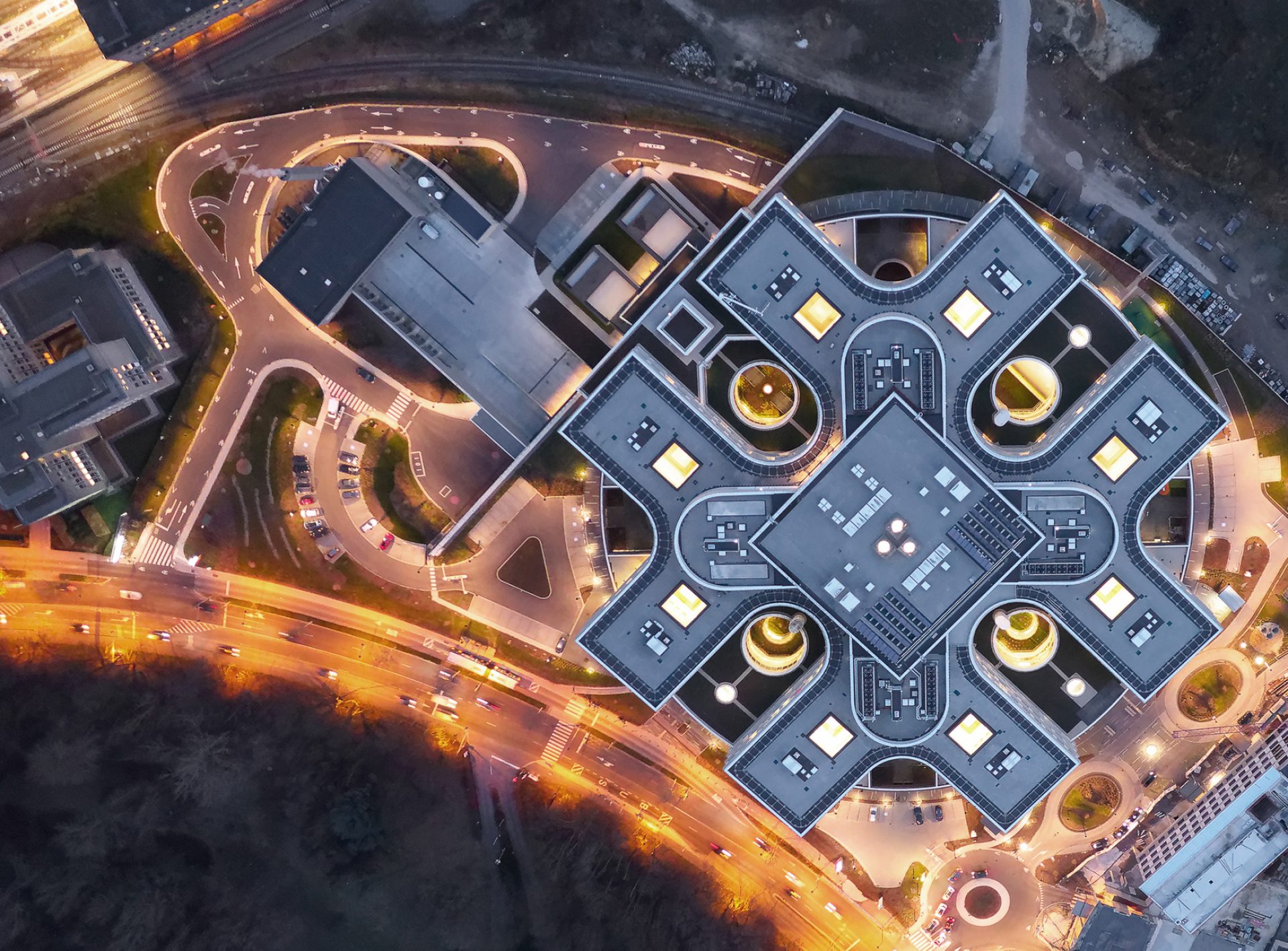
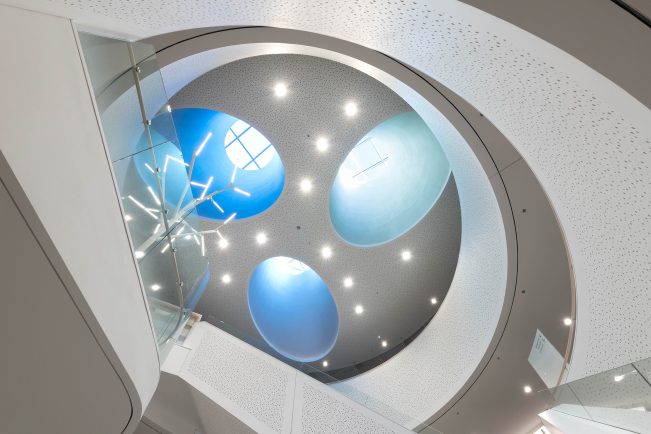
| program | construction of an entire new general hospital on an urban site. Consolidation of all acute & inpatient activities of the sites (Cavell & Leopold) into one new building |
| client | Centre Hospitalier Interrégional Edith Cavell (CHIREC) |
| address | boulevard du Triomphe 201 • 1160 Brussels |
| building type | heal |
| status | completed |
| expertises | architectureinterior architecturebimlandscape designurban design & planningconstruction managementfeasibility studiesprogrammingbuilding audit |
| offices | brussels |
| size | 104.000 m² |
| team | • stability engineer: Greisch • special technologies engineer in EPB: Ingenium (subcontractor: SWECO) |
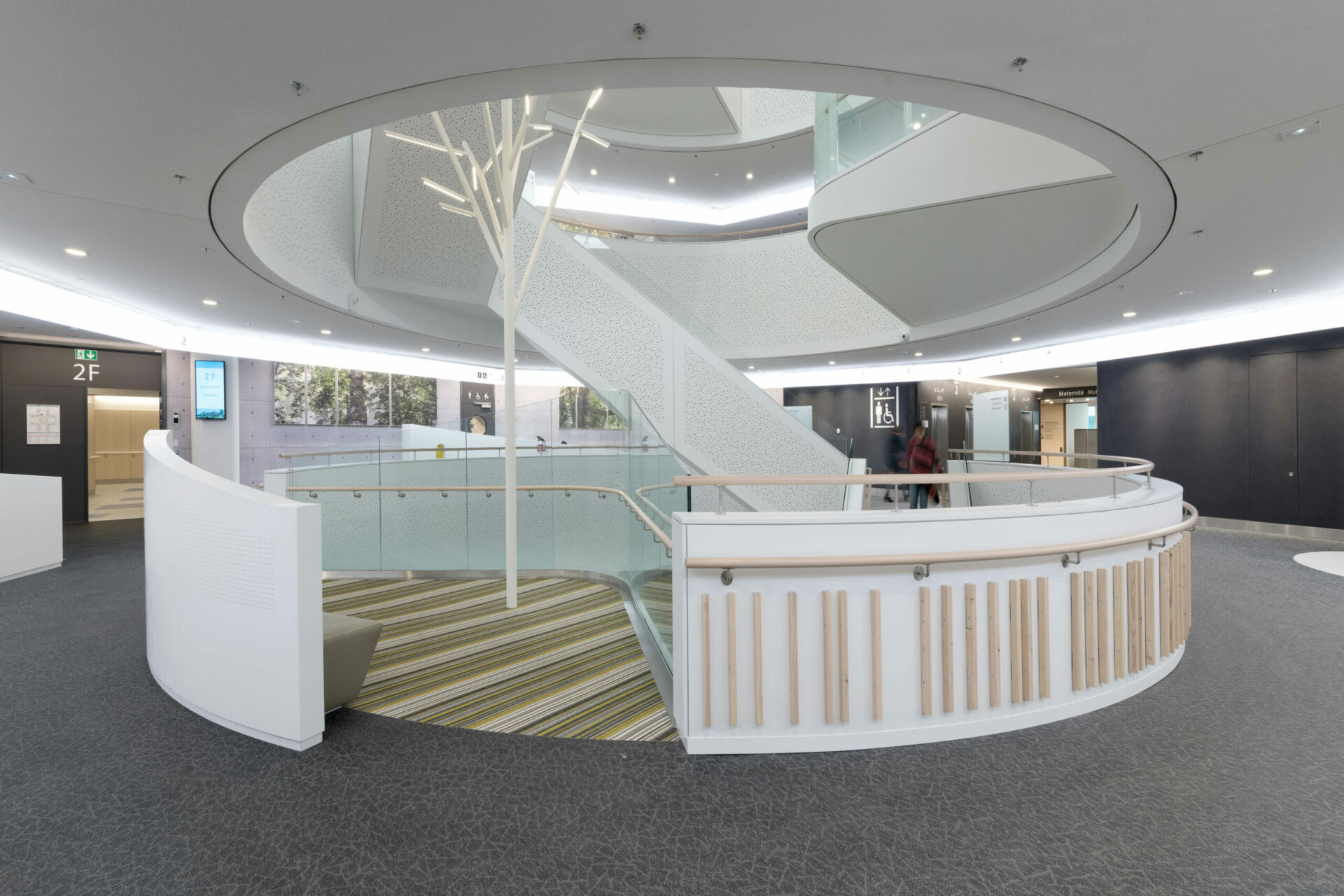
A modern 563-bed hospital in an ideally located and easily accessible area, which enables the hospital group to meet the expectations of its patients by offering them high quality care in bright, welcoming, and comfortable spaces.
The space has been designed to ensure easy accessibility with ease of circulation for patients and visitors.
Everything has been designed to optimise the functionality of the building, to ensure the user-friendliness of the spaces in order to provide maximum comfort for patients, as well as optimum working conditions for doctors The programme involved bringing together all the acute and inpatient activities of the current sites (Cavell & Léopold) within a single building.
The major organisational challenges of the project concerned the general functionality of the building, the user-friendliness of the spaces, improvement of the reception, and comfort of the patients and the working conditions of the doctors and staff, flexibility and scalability, the implementation of appropriate technologies, etc. Architecturally, this programme translates into care units of standardised size, mostly individual rooms, a modular technical platform – enabling spaces and circuits to be optimised, restrained and comfortable reception and waiting areas, efficient information and communication systems, and – a fundamental element – great simplicity and legibility of access and flows (patients, visitors, carers, etc.) and nursing staff.
In addition, rationalisation, which groups together heavy equipment and centralises logistics, allows for economies of scale and thus promotes the organisation’s performance.
With a surface area of 104.000 m², the hospital has 7 levels, 2 of which are located in the basement, making the best use of the sloping terrain.
The upper 3 floors are occupied by the 8 treatment units on each floor level, while the 11.000 m² area of the 1st floor is used for consultations.
The technical platform (emergency, medical imaging, intensive care, operating theatre block) is located on the first basement floor, ensuring a minimum of risk during the transport of patients suffering from acute pathologies.
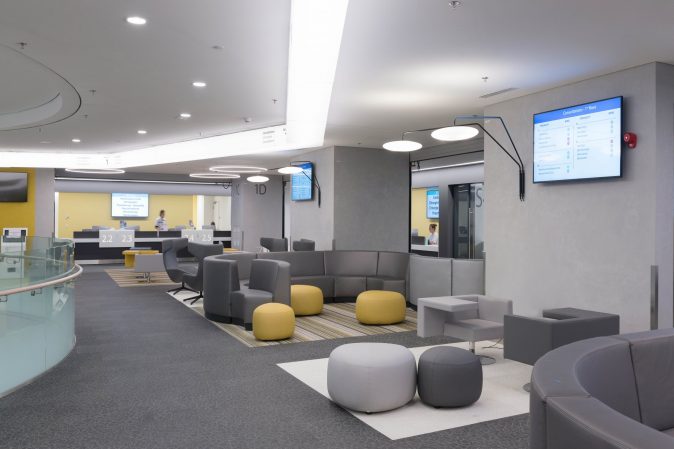
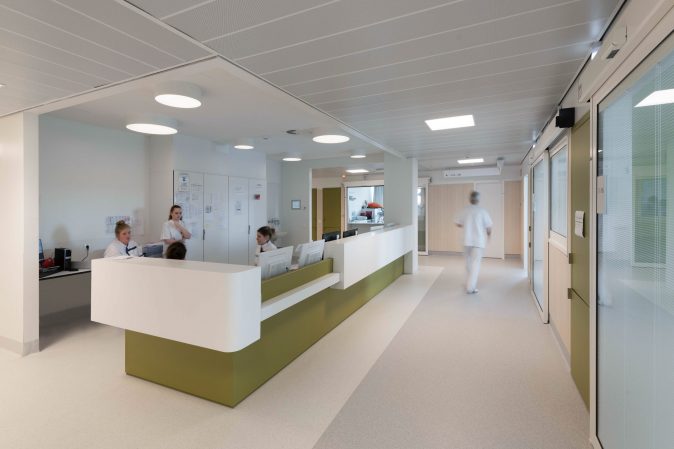
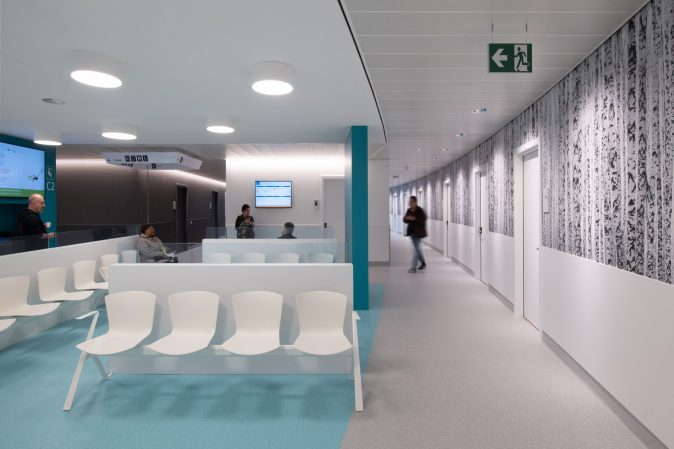
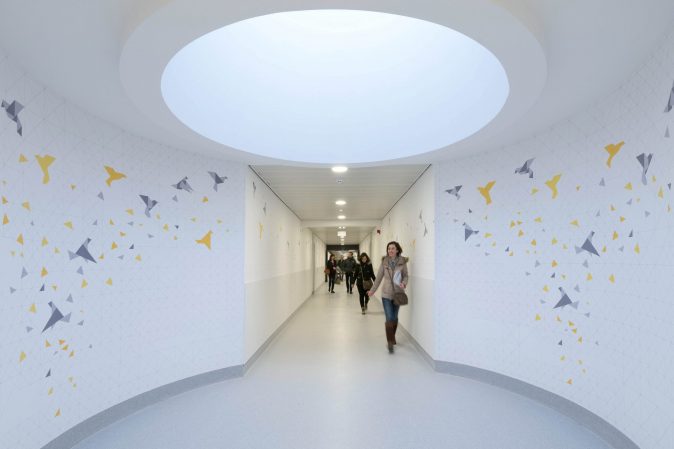
The project for the consolidation of the Brussels sites into a single site was initiated in 2006 after the finding that the infrastructure was outdated and that extensions were not possible.
The project is highly structured in order to ensure maximum flexibility over the long term. Visitor circulation is clearly separated from the medical and logistical circuits; their layout makes it easier for users to read and find their way around. Benchmarking with several Belgian and foreign hospitals shows that the distances to be covered are optimised, both for visitors and patients and for doctors and staff.
The architectural materialization is restrained, through the choice of quality materials with a reasonable maintenance cost (floors, joinery and fittings, facades, etc…).
The facades of the project, as well as the fencing and planted walls, constitute the built perimeter of the public space. This enclosure is not sealed, and the public function of the hospital creates an osmosis between public and private space, one enhancing the other and thus increasing socio-spatial security.
The building accommodates 473 beds and 90 day hospitalization beds; the departments are as follows:
This project also forms part of a complete reorganisation of the institution to improve the quality of care offered to patients in general hospitals strategically located in the Brussels region, with the Delta and Sainte-Anne Saint-Rémy sites, and in Walloon Brabant, with the Braine-l’Alleud site. Partnerships with networks of polyclinics also contribute to a geographical distribution of care provision.
The construction of a hospital on the Delta site is accompanied by the establishment of commercial, catering, and hotel structures that will stimulate activity and employment at the heart of one of the most important communication crossroads in Brussels.
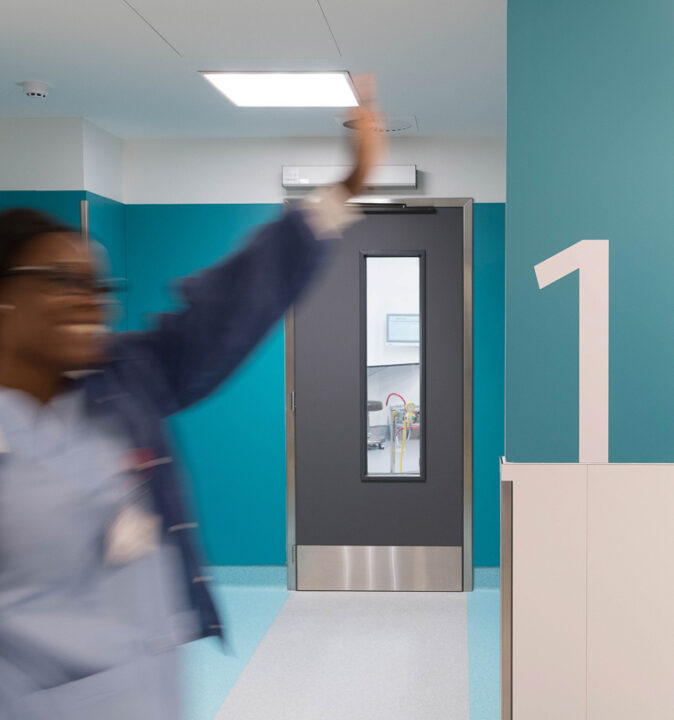
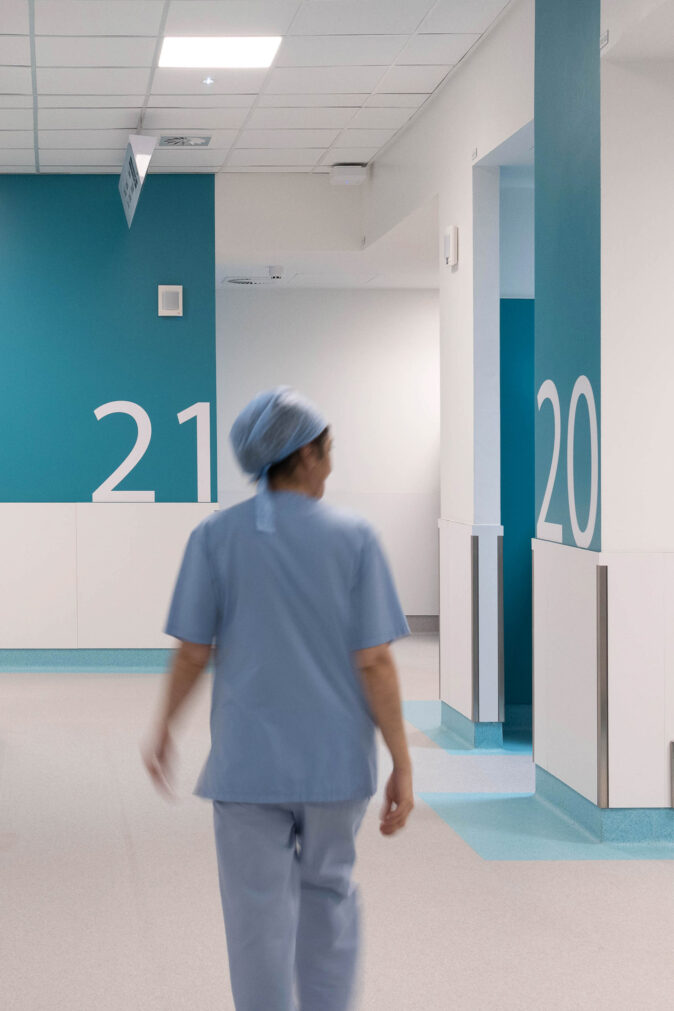
The operating theatre of the future Delta du Chirec site includes all general and outpatient surgery (except ophthalmology). This is located on level -1 where it is directly linked to the other acute medical-technical services: the emergency, intensive care, and the complete imaging platform (including isotopes and angiography).
This covers more than 7,000 m² and is divided into two zones of 14 rooms each, which surround the post-interventional monitoring areas (SSPI). The whole area is located above the changing rooms and the staff relaxation rooms as well as the sterilisation area.
This can therefore be divided it into 4 distinct zones:
The flow of patients and logistics has been designed according to the forward flow, unidirectional principle, in order to avoid crossing circuits. The “clean” lifts therefore deliver the materials close to the patient access to the block. The circuit continues counterclockwise in the north and clockwise in the south ending with a waste and disposal depot not far from the access to the recovery room corridor. Sufficient storage space is provided just in front of the rooms for clean and dirty trolleys, as well as on the other side of the corridor for the storage of mobile equipment – arthroscopy tower, brilliance amplifier, etc.
Spatially, skylights provide natural light in the circulation areas and in the recovery room so that all users in the area can benefit from this aspect
level g+3
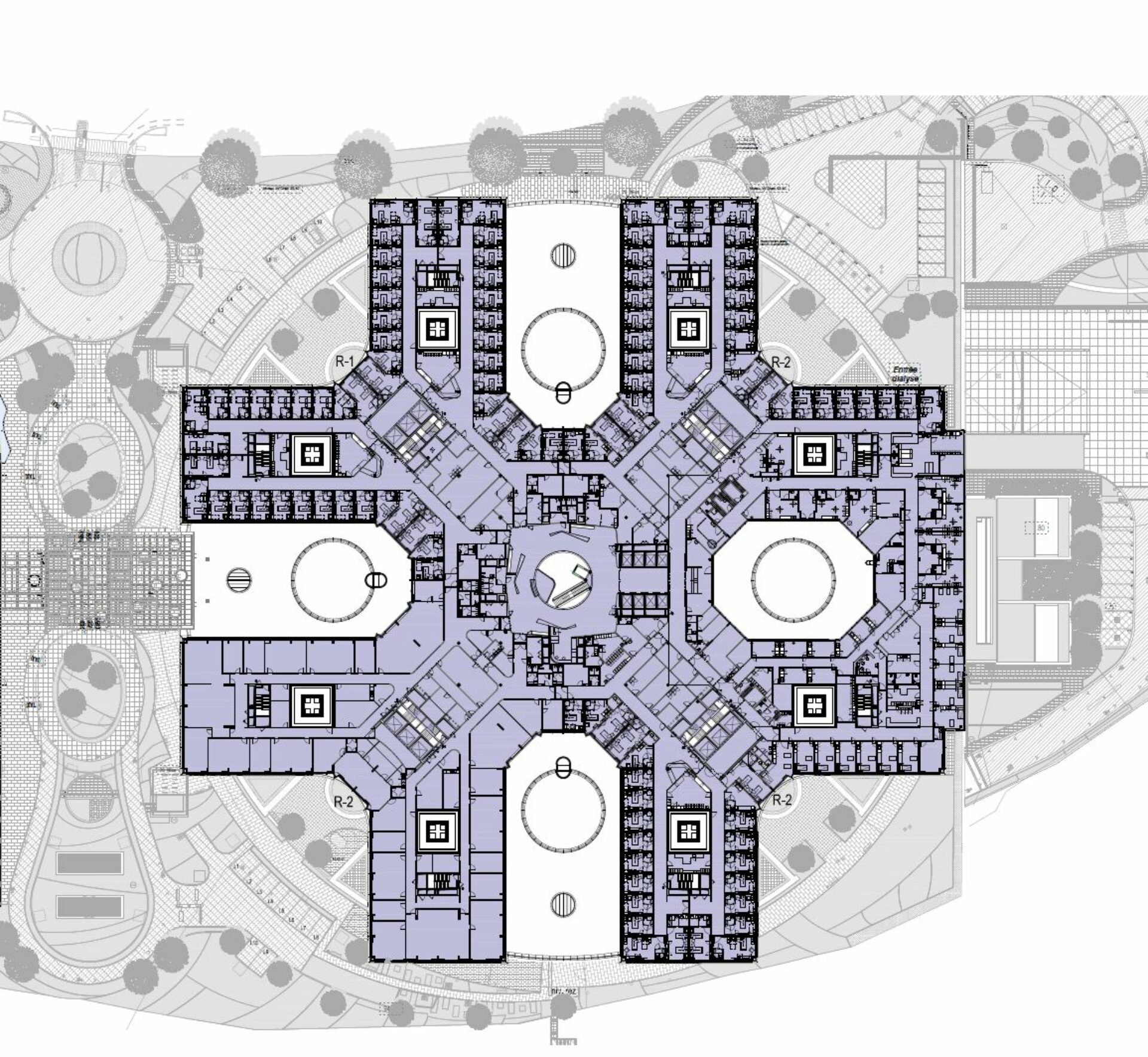
Chirec Delta finalist of the MIPIM AWARDS 2020 in the category of “Best Healthcare Development”